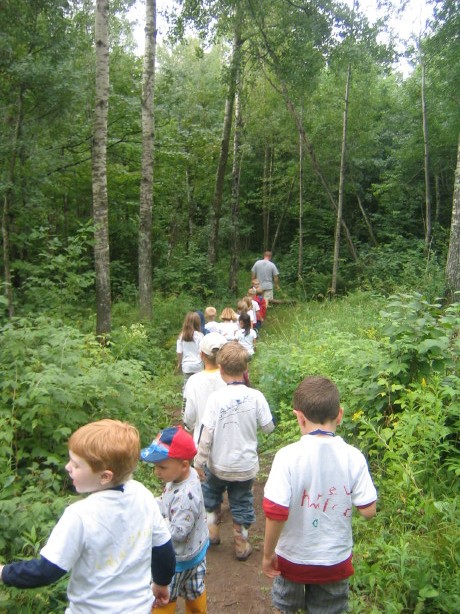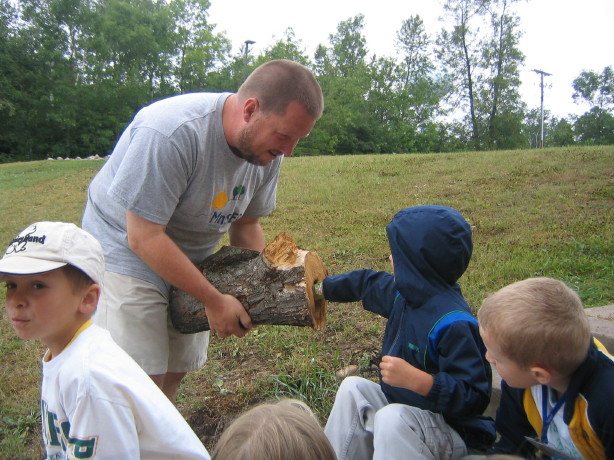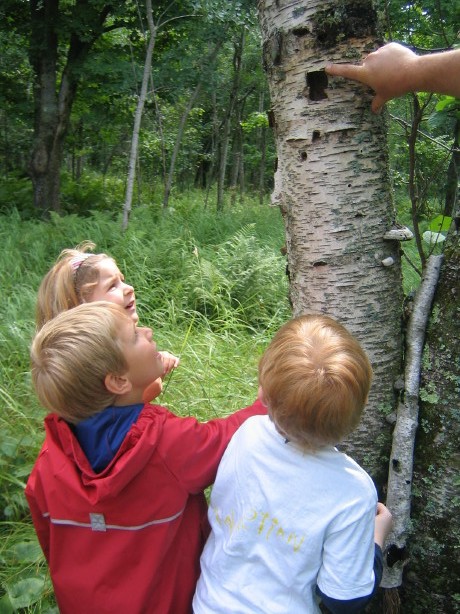 I’ve come a long way in my journey as a fifth grade teacher. I used to be stressed out about taking kids outside, but now I look forward to doing it every day. Along the way, my skills in instruction, classroom management, and curricular understanding have grown, and so have the projects themselves.
I’ve come a long way in my journey as a fifth grade teacher. I used to be stressed out about taking kids outside, but now I look forward to doing it every day. Along the way, my skills in instruction, classroom management, and curricular understanding have grown, and so have the projects themselves.
In my college experience, they scare you about liability, litigation, and student safety. Amidst all of this, how could I teach in the outdoors? On top of it all, I couldn’t name a single tree out there!
Despite my fears, one thing drove me forward: my personal memories of the forest from my early years and all the things I learned there. Some of the more non-traditional settings were the places I learned the most! I had to become a competent educator who used the outdoors as a classroom.
Teaching outside is a natural for my school. Bay View Elementary is located near the boreal forest of northern Minnesota. We have a beautiful 40-acre School Forest that is now enrolled in the Minnesota Department of Natural Resources’ “School Forest Program.” This was an unused resource before I came to Bay View.
My very first time teaching a class outside still sticks with me. I had them partner up – one person stayed behind on the lawn and the other student ventured into the forest to collect items for a nature mobile. My rule: the children must stay within sight of their partner. If they went too far into the forest, they were to sit down and start yelling and I would come and rescue them. No rescues were necessary! I was stressed out tremendously, but the children had a lot of fun and I experienced the value of teaching outdoors.
A Buddy Program With Younger Students
 Initially, most of my formal outdoor lessons were either from Project Learning Tree or Project WET. Much of the content was new to me, but these wonderful lessons are very well written, easily taught, and fun for the students. I implemented a “Buddy Program” to spread the learning to younger students at our school.
Initially, most of my formal outdoor lessons were either from Project Learning Tree or Project WET. Much of the content was new to me, but these wonderful lessons are very well written, easily taught, and fun for the students. I implemented a “Buddy Program” to spread the learning to younger students at our school.
One of the things we did was visit a kindergarten class once a week. Most days, we hiked through the School Forest together. During these walks, my fifth grade students showed the kindergartners what they learned about in the forest. By listening to how the fifth graders explained what they learned to the younger students, I learned a lot about how I could improve.
Gathering Supplies for Teaching Outdoors
I’ve commandeered a school storage room and filled it with equipment that I’ve scrounged, bought with grant money, or found from other sources. This equipment includes full classroom sets of hip waders and snowshoes, essential for exploring the forest throughout the year.
An After-School Forest Club
I started an after-school club for all grades because I wanted everyone to experience playing and learning together outside in our own School Forest. For our first activity we played Capture the Flag and invited students and their parents to come and play. We had a lot of fun!
The after-school club allowed us to get comfortable using our “outdoor classroom.” The students and parents who attended the after-school events developed a lighter attitude: they were there to have fun and that made for better students.
Learning Beyond the Classroom
Beyond the classroom setting, my friend David McNamee and I worked together to organize camping trips for kids and parents. Our first overnight camping trip took place in our School Forest. You don’t need a school forest for an outdoor overnight experience – just a playground or outdoor space. We cooked dinner, played games, tracked wildlife, and gave the families an experience they will remember for a long time.
Since then, I’ve taken students and parents on two-night stays at an environmental learning center. Dave and I have also taken parents and students on wilderness canoe trips in northern Minnesota. These trips not only include the basics of camping, but also include journalling, lessons from Project Learning Tree, and an understanding of aquatic habitat and fire ecology. Each time we do one of these educational outdoor trips, I learn more myself.
 New Opportunities for Outdoor Experiences
New Opportunities for Outdoor Experiences
More teachers are participating in the Buddy Program because it’s a great entry-level opportunity for environmental education experiences. The School Forest Club has prospered, and a couple of naturalists come to conduct more formal after-school programs. Soon we will be adding an additional 93-acre tract to our School Forest that our municipality has given the school district. Finally, we have just completed a summer Urban Wilderness Camp for the children of our area.
This year, the first group of kindergarten students we brought outside are now in fifth grade. As my comfort level using the outdoor classroom has grown, I think I am finally ready for the plunge: this year I hope to take my class outside every day as part of their instruction (rain, shine, and Northern Minnesota cold). It has taken time to get here, but it has sure been fun. The key all along has been to just get outside and let the rest take care of itself.


